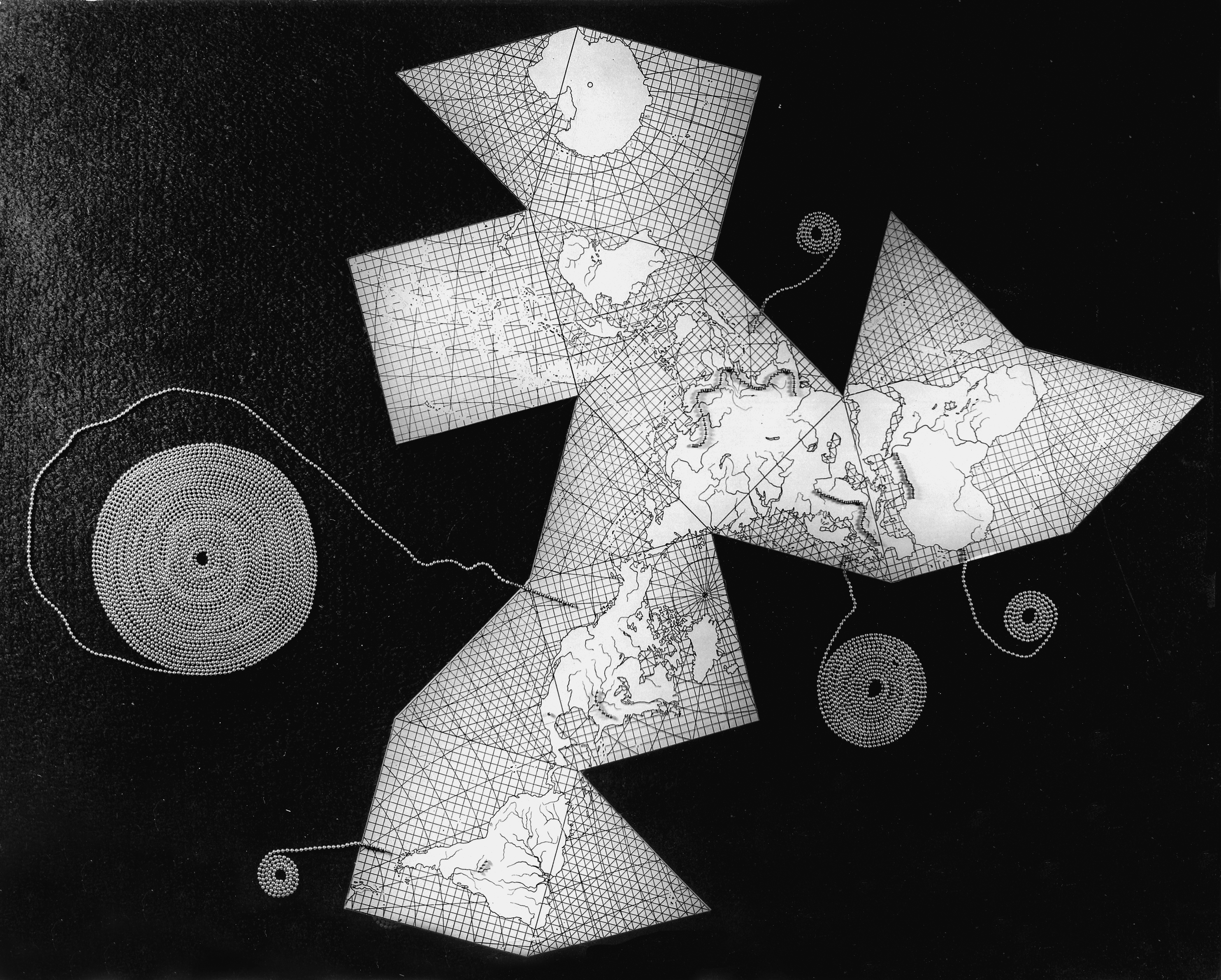Fuller’s map is printed in the final section of Bayer’s book in a section also titled “Conservation of resources.” Peder Anker observes that the human figures in this map are a feature of Herbert Bayer's design graphics in this publication (see Peder Anker, "Graphic Language: Herbert Bayer's Environmental Design," Environmental History 12 (April 2007): 254–278). However, this synthesis of Bayer's graphics into Fuller's map also constitutes a visual language of "energy slaves" which is consistent with Fuller's humanistic aims. For reproductions of the Dymaxion world map during the 1940s see: “Life presents R. Buckminster Fuller's Dymaxion World,” Life Magazine, March 1, 1943: 41-55, which begins with the sub-header “It is designed for political geographers.” On the reverse of the cut-out map which could be assembled by readers, Fuller calculates percentages of land, water and populations in the US, Chile, Argentina, the North and South Poles. In 1944 a version of the world map by Fuller and assistants was reproduced in The American Neptune: A Quarterly Journal of Maritime History and Arts IV, no 2 (April 1944): 119–136, accompanying an article by Fuller titled, "Fluid Geography." The map carries percentages of world population in the continents. In footnote 1 on page 122–123, Fuller outlines his chronology of world maps since 1927.
R. Buckminster Fuller and Robert Marks, The Dymaxion World of Buckminster Fuller (New York: Anchor Press Doubleday, 1973), 21.
➝.
Marks and Fuller, 51.
Marks and Fuller, 16.
Marks and Fuller, 53-54.
Hodgins memo, p.1. Eric Hodgins was Publisher of Fortune Magazine between 1937–41, and during Fuller’s appointment. From 1941–46 he was Vice-President of Time Inc., and in 1946 he published the novel Mr Blandings Builds His Dream House.
Memo from Buckminster Fuller to Ruth Berrion, August 11, 1940, 2.
Letter from Marshall McLuhan to Buckminster Fuller, 11 August, 1963.
Ibid.
All images and quotations from correspondence are reproduced Courtesy, R. Buckminster Fuller Estate.
Structural Instability is collaboration between e-flux Architecture and PennDesign.
